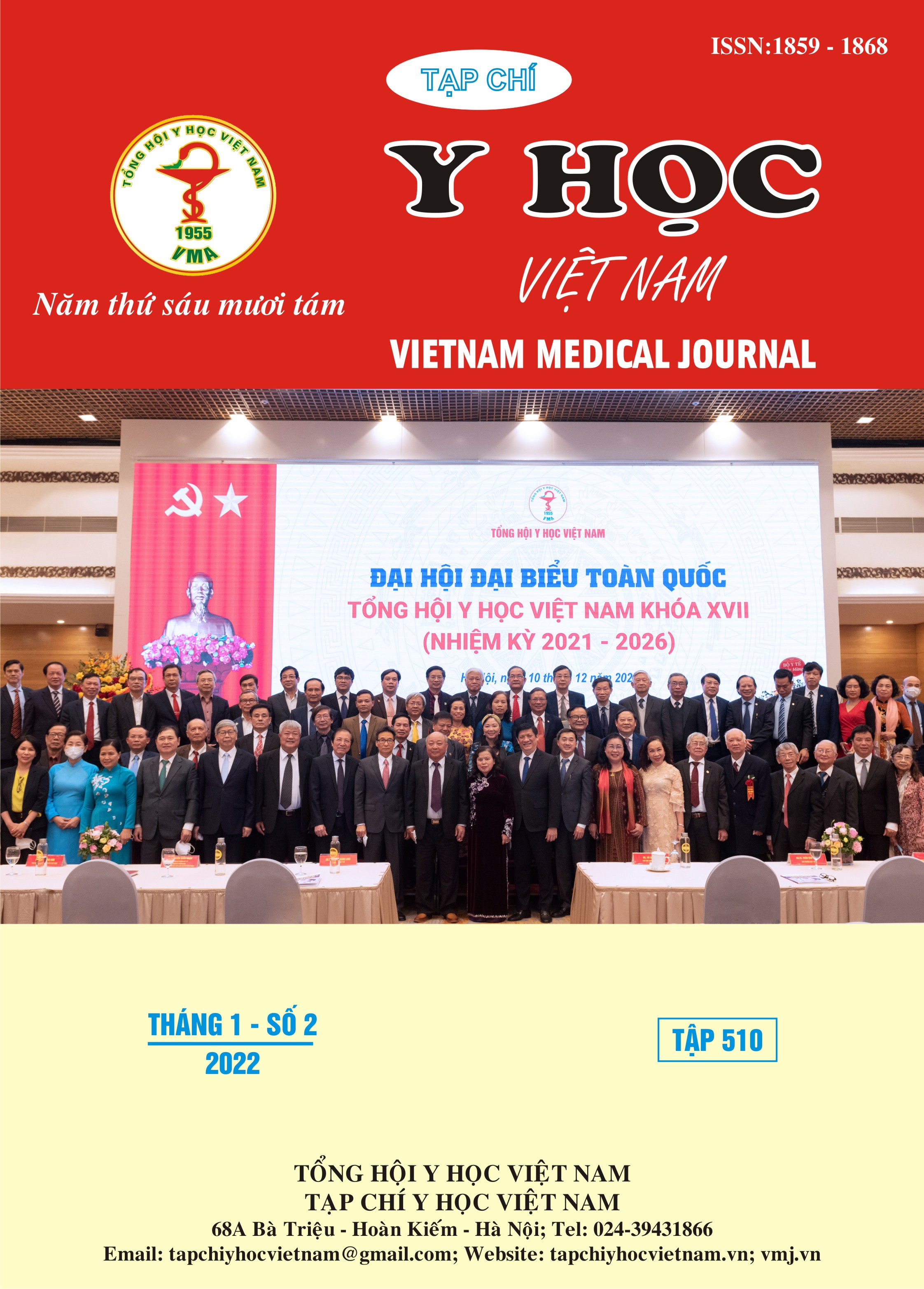INVESTIGATION PREVALENCE, SUBCLINICAL AND MARKERS CHARACTERISTICS OF HEPATITIS B VIRUS INFECTION AMONG PREGNANT WOMEN AT 103 MILITARY HOSPITAL
Main Article Content
Abstract
Objectives: To determine the prevalence of HBV infection, to investigate subclinical characteristics and HBV serologic markers in pregnant women in Military Hospital 103. Subjects and methods: A cross‐sectional study. 1071 pregnant women were examined and screened for HBV infection in the Department of Obstetrics, Military Hospital 103, from 08/2021 to 12/2021. Results: Among 1071 pregnant women, there were 120 patients with HBsAg (+) (accounted for 2.17%). In pregnant women with HBsAg (+), there were 37 patients with HBeAg (+), accounted for 30,8%. The rate of hepatitis during pregnancy was 61,7%. The rate of HBV DNA (+) was 80,0%, of which 62 patients had serum HBV DNA > 5log10 UI/ml accounted for 51,7%. Conclusions: In pregnant women, the rate of HBsAg (+) was 2.17%. The rate of hepatitis during pregnancy was 61.7%. In pregnant women with HBsAg (+), the rate of patients with HBeAg (+) was 30.8% and 51.7 % of them had high HBV DNA level.
Article Details
Keywords
Hepatitis B virus (HBV) infection, pregnant women
References
2. Robert D Burk, Lu-Yu Hwang, Gloria YF Ho. et al. (1994), "Outcome of perinatal hepatitis B virus exposure is dependent on maternal virus load". Journal of Infectious Diseases, 170(6), pp. 1418-1423.
3. Onder Akkaya, Murat Kiyici, Yusuf Yilmaz. et al. (2007), "Clinical significance of activity of ALT enzyme in patients with hepatitis C virus". World journal of gastroenterology, 13(41), pp. 5481-5485.
4. M. Martinot-Peignoux, N. Boyer, M. Colombat. et al. (2002), "Serum hepatitis B virus DNA levels and liver histology in inactive HBsAg carriers". J Hepatol, 36(4), pp. 543-6.
5. Lê Đình Vĩnh Phúc,Huỳnh Hồng Quang (2016), "Nghiên cứu tỉ lệ và đặc điểm của nhiễm virus viêm gan B ở phụ nữ độ tuổi sinh đẻ từ 20 đến 35 tại trung tâm y khoa Medic thành phố Hồ Chí Minh năm 2015". Tạp chí Y học dự phòng, 8(181), pp. 108-117.
6. Trần Thị Lợi (1995). Lây truyền virút viêm gan B từ mẹ sang con. Khả năng dự phòng. Luận án phó tiến sĩ khoa học y dược, 52-63.
7. Phạm Song (1992), "Bước đầu tìm hiểu sự truyền nhiễm của virút viêm gan B ở phụ nữ có thai và vai trò của HBeAg trong đường lây này". Y học Việt Nam, 5(165), pp. 1-5.
8. Lê Thanh Quỳnh Ngân,Bùi Hữu Hoàng (2013), "Khảo sát đặc điểm nhiễm virus viêm gan B ở phụ nữ mang thai tại Bệnh viện nhân dân Gia Định". Y học thành phố Hồ Chí Minh, 17(6), pp. 25-30.
9. Behrouz Navabakhsh, Narges Mehrabi, Arezoo Estakhri. et al. (2011), "Hepatitis B Virus Infection during Pregnancy: Transmission and Prevention". Middle East journal of digestive diseases, 3(2), pp. 92-102.


